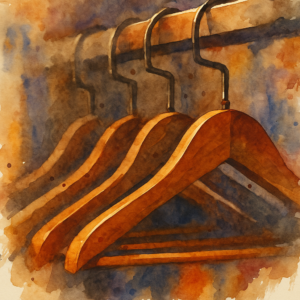“croustillant” means crispy or crunchy, you know that, right. Did you know its figurative meanings? Hear that word and more in this 15 second clip from the Manger podcast. Improve your French listening skills from any level with our transcription quiz.
Start quiz, type what you hear, then join the conversation.
Did you find this one challenging or easy? Did you hear something diffferent? What surprised you? What levels did you complete? Comment below and share what’s opening up for you with this quiz.
This clip is from Manger Episode 1. Listen and fill in what you hear below. Read more and find a translation below. Listen to the full episode here.
This audio sample and transcription is from Manger ep. 1. We do not own the content. Listen to the entire episode
crispy
Love this word. For how it sounds and what it means. I love crispy foods and anything with a crunch. And I love that we get a hint of how croustillant can be used in some figurative or metaphorical ways beyond just food. Not sure what that would be, as it’s not in this clip. But still quite interesting to consider.
What’s opening up for you in this clip?
The snippet in English
Find a translation of this snippet here, how much of this did you hear?
Et aussi il y avait un côté aussi très plaisir. Donc j’ne sais pas parce que à l’époque en fait, c’était très en vogue tout ce qui est croustillant donc tout ce qui est croustillant en fait, c’est c’est du plaisir, ça renvoie, ça renvoie à une gourmandise en fait.
And also there was a side also very pleasurable. So I don’t know, because at the time it was very fashionable to have everything crispy, so everything crispy is pleasure, it refers to a delicacy in fact.
The above translation from Deepl. Source
What does “un côté” mean?
“Un côté” is a French phrase that translates to “one side” or “a side” in English. It is commonly used to refer to a specific aspect, perspective, or facet of something. Here’s a breakdown of its meaning, usage, and examples:
Meaning: “Un côté” refers to a particular side or aspect of a situation, object, or person. It implies that there are multiple facets or angles to consider.
Usage/Examples:
- “Il y a un côté positif à cette situation.” (There is a positive side to this situation.)
- “D’un côté, je comprends tes motivations, mais d’un autre côté, je pense que c’est risqué.” (On one hand, I understand your motivations, but on the other hand, I think it’s risky.)
- “Il a un côté créatif qui se manifeste dans ses peintures.” (He has a creative side that manifests in his paintings.)
“Un côté” can be used in various contexts, such as discussing different aspects of a personality, analyzing pros and cons, or examining different angles of a situation.
Interesting Notes:
- “Côté” can also be used on its own to mean “side” or “aspect.” For example, “de mon côté” means “on my side” or “from my perspective.”
- “Côté” can be combined with other words to express specific meanings. For instance, “côté jardin” means “garden side” or “facing the garden.”
In conclusion, “un côté” is a versatile phrase used to highlight a particular aspect or perspective. It allows for a nuanced understanding and analysis of various elements.
What does “en vogue” mean?
Yes, “en vogue” is a commonly used phrase in French, which means “in vogue” or “trendy” in English. It is used to describe something that is currently popular, fashionable, or in style. Here’s some information about its usage, origin, and examples:
Usage: “En vogue” is used to talk about trends, styles, or things that are currently popular or fashionable. It can be used to describe various aspects, such as fashion, music, art, or cultural phenomena.
Examples:
- “Cette marque de vêtements est très en vogue cette saison.” (This clothing brand is very trendy this season.)
- “Le style rétro est de nouveau en vogue.” (The retro style is back in vogue.)
- “Ce groupe de musique est en vogue en ce moment.” (This music band is popular right now.)
Origin: The phrase “en vogue” is of French origin and has been used since the 18th century. It comes from the French verb “voguer,” which means “to sail” or “to glide.” The expression suggests the idea of something being in the current or flowing with the trend.
Interesting Notes:
- “En vogue” is often used in the context of fashion and entertainment industries to describe what is currently popular or in style.
- The phrase can also be used in a broader sense to describe trends or popular movements in society or culture.
In conclusion, “en vogue” is a widely used French phrase to describe something that is currently fashionable or popular. It is commonly used in the context of fashion, music, and cultural trends.
What does “croustillant” mean?
“Croustillant” is an adjective in French that translates to “crispy” or “crunchy” in English. Here’s some information about its meaning, usage, origin, examples, and any interesting notes:
Meaning: “Croustillant” refers to something that has a crispy or crunchy texture. It is often associated with food that is cooked or baked until it becomes golden and crisp on the outside while remaining tender on the inside.
Usage: “Croustillant” is primarily used to describe the texture of food, especially baked goods like pastries, bread, or biscuits. It can also be used metaphorically to describe situations, stories, or experiences that are exciting, engaging, or full of suspense, akin to the way a crispy texture stimulates the senses.
Examples:
- “Ce croissant est croustillant à l’extérieur et moelleux à l’intérieur.” (This croissant is crispy on the outside and soft on the inside.)
- “J’adore les chips bien croustillantes.” (I love crispy chips.)
- “Le film offre une intrigue croustillante qui tient en haleine jusqu’à la fin.” (The film provides a gripping and suspenseful plot that keeps you engaged until the end.)
Origin: The word “croustillant” comes from the French verb “croustiller,” which means “to crunch.” It is derived from the onomatopoeic sound “croust,” representing the sound of something crispy being bitten or crunched.
Interesting Notes:
- “Croustillant” is often used in culinary contexts to describe the desirable texture of various foods.
- It can also be used in figurative or metaphorical ways to describe engaging or suspenseful situations.
- The word can evoke a sensory experience, as it suggests a pleasing sound and texture when something is bitten or crunched.
In conclusion, “croustillant” is a versatile adjective used to describe the crispy or crunchy texture of food, as well as metaphorically to convey excitement or suspense.
What does “ça renvoie” mean?
“Ça renvoie” is a French expression that can be translated as “it refers,” “it sends back,” or “it reflects.” Here’s some information about its meaning, usage, and examples:
Meaning: “Ça renvoie” indicates that something refers to or relates to something else. It implies a connection or association between two elements or ideas.
Usage: “Ça renvoie” is commonly used in both formal and informal contexts. It can be used to express various relationships, such as cause and effect, correlation, similarity, or representation.
Examples:
- “Ce discours renvoie aux valeurs fondamentales de notre société.” (This speech refers to the fundamental values of our society.)
- “Son attitude renvoie à un manque de respect.” (His/her attitude reflects a lack of respect.)
- “Cette image renvoie à une scène célèbre du film.” (This image refers to a famous scene from the movie.)
- “L’étude renvoie à une corrélation positive entre le temps de travail et la productivité.” (The study suggests a positive correlation between working time and productivity.)
Notes:
- “Ça renvoie” can be followed by a noun, pronoun, or a complete phrase.
- It is a versatile expression that allows for conveying various types of relationships or connections between different elements.
- The specific meaning of “ça renvoie” depends on the context in which it is used.
Overall, “ça renvoie” is a useful expression in French to express the idea of something referring to or reflecting something else. It helps to establish connections, associations, or relationships between different elements or ideas.
What does “une gourmandise” mean?
“Une gourmandise” is a French term that refers to a “delicacy” or a “treat.” Here’s some information about its meaning, usage, and related details:
Meaning: “Une gourmandise” typically refers to a food item or dish that is considered indulgent, delicious, and often associated with pleasure. It can be a dessert, a sweet treat, or any kind of food that is enjoyed purely for its taste and enjoyment.
Usage: The term “une gourmandise” is commonly used to describe a specific food item or to express the concept of indulging in culinary pleasures. It conveys the idea of savoring something tasty and satisfying, often without guilt or restraint.
Examples:
- “Ce gâteau au chocolat est une vraie gourmandise !” (This chocolate cake is a true delicacy!)
- “J’adore me faire une petite gourmandise après le dîner.” (I love treating myself to a little indulgence after dinner.)
- “Les pâtisseries françaises sont réputées pour leur finesse et leur gourmandise.” (French pastries are renowned for their refinement and deliciousness.)
Notes:
- “Une gourmandise” is often associated with enjoying food for pleasure rather than mere sustenance.
- It can refer to both sweet and savory delicacies, depending on the context.
- The term can also be used metaphorically to describe any indulgent or enjoyable experience beyond food, such as a luxurious spa treatment or a relaxing vacation.
In French culture, “une gourmandise” is highly valued, and the appreciation of good food and culinary delights is an integral part of the French lifestyle.
What did you love about this?
Comment below with your feedback! Tells us what you think. Send a note or leave a comment below. We appreciate the feedback. Also, we’re always looking for partners to build this site and grow the content available.
“croustillant” means crispy or crunchy, you know that, right. Did you know its figurative meanings? Hear that word and more in this 15 second clip from the Manger podcast. Improve your French listening skills from any level with our transcription quiz.
Start quiz, type what you hear, then join the conversation.
Did you find this one challenging or easy? Did you hear something diffferent? What surprised you? What levels did you complete? Comment below and share what’s opening up for you with this quiz.
 Kids Songs
Kids Songs 







